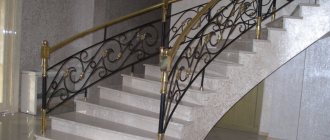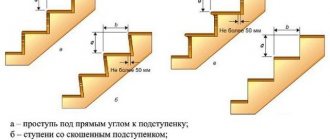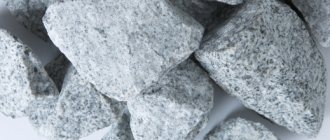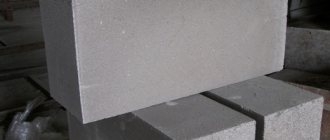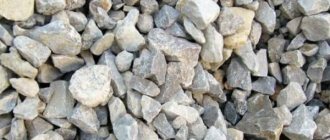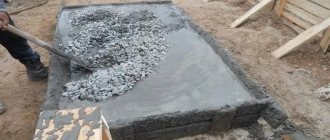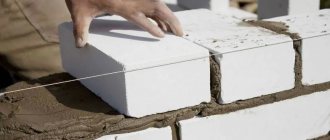It is difficult to imagine the modern construction of multi-storey buildings without the use of reinforced concrete elements in the form of staircases and flights. From the point of view of comfort, convenience and, most importantly, safety, all buildings with a height of more than one floor should be equipped with flights of stairs. At the same time, the most practical wear-resistant and durable products are reinforced concrete products, which have a long service life. In this regard, reinforced concrete, which meets all the requirements for reliability and fire safety of buildings, has earned high popularity and is used for the construction of a wide range of industrial, civil and military facilities. It is worth noting that landings and flights are also in demand in suburban construction. Affordable cost and high performance characteristics make it possible to effectively use standard structures in the construction of houses and cottages, allowing the construction of modern, comfortable and original real estate.
Types of reinforced concrete marches
The design, dimensions and requirements for reinforced concrete platforms of stairs and flights are regulated by the industry standard GOST 9818-85, which applies to products made of light and heavy concrete with an average density level ranging from 1600 to 2000 kg/m3.
Entrances and buildings use platforms that are connected to each other by a certain number of steps. Depending on the design, flights of stairs are divided into prefabricated and monolithic. The latter are manufactured using formwork of standard sizes, making it possible to obtain ready-made whole blocks. Often such structures are used in the construction of standard structures. Prefabricated reinforced concrete stairs have differences in shape, as well as type of execution, divided into left and right. In addition, marches are produced with various types of coating. The surface of the steps can be glossy or filled. In some cases, products are tiled.
When constructing multi-story structures and buildings, the following types of marches are used:
- direct design, which consists of symmetrical spans installed one above the other;
- rotating design with interfloor platforms, which saves space and shortens the path when climbing;
- rotary design with winder steps. There should be no more than 18 steps in one flight. In this regard, when installing large structures, they must be separated by intermediate platforms. The permissible gap between rotary marches ranges from 100 to 150 mm.
In addition, there are spiral structures, flights of stairs located on a load-bearing beam and bowstrings, and elements that use fastening in a load-bearing wall.
Installation features
Installation of reinforced concrete staircases begins with template production. A wooden beam is used for it. The necessary markings are made on the cage, cement mortar is applied and the platform is secured. Its position must strictly comply with the design and construction level indications, wooden blanks.
The next step is laying the march on the prepared seat with the same solution. In this case, the fixation of the structure begins from the bottom so that the upper end does not slip or the element gets jammed between the mounting points.
Classification of concrete stair structures
The inclined part of a reinforced concrete stair element is usually called a march. The march includes steps and a supporting structure, representing a connecting link between floors and interfloor floors. According to the number of half-platforms, the absence or presence of frieze steps in accordance with GOST 9818-85 standards, flights will be divided into the following types:
- LM – products without frieze steps with flat flights of stairs;
- LMP – ribbed marches with half-platforms;
- LMF – ribbed structures equipped with frieze steps;
The steps that are located closest to the concrete platform are usually called frieze. Ribbed marches with half-platforms are classified into products with one and two half-platforms. Flat ones are designed for installation in heated and unheated buildings, both indoors and outdoors, with an operating temperature limit of up to -40ºС.
Horizontal platforms that perform the function of connecting spans are differentiated into the following types:
- a) ribbed or flat type for constructing marches without frieze steps of the LM type (2LP and 1LP);
- b) intermediate and storey structures of ribbed LPP slabs, used to equip LMP flights;
- c) LPF ribbed slabs, used in conjunction with LMF marches.
Parameters and characteristics of stair elements
According to GOST 9818-85, flights of stairs and slabs of span structures are intended for installation and operation with a load of up to 3.5 kPa in residential buildings and up to 4.7 kPa in industrial buildings, industrial buildings, auxiliary and public buildings.
Site dimensions
Platforms that perform the function of connecting steps into spans can consist of either one or two elements. The length of the platform in a building between straight flights is determined based on human comfort and must be at least one average step. As a rule, this value is taken to be 620 mm. The standard size of turntables varies in length from 1000 mm. In this case, the width is equal to the width of the flight of stairs.
Number of steps and step size
Based on the design of reinforced concrete stair elements, a person’s step includes the height of two risers and the width of the tread, averaging from 600 mm to 640 mm. When designing flights of stairs for comfortable climbing, it is necessary to calculate the dimensions of the steps based on the height of the flight and the number of steps in it. The width of the tread should allow you to comfortably place an average-sized foot on it, the length of which is considered to be from 260 to 320 mm. in this case, the dimensions of the risers can vary in the range from 140 mm to 200 mm, averaging 170 mm.
The safety of a flight of stairs is the main principle for calculating the parameters of steps. safety components are the width of the horizontal surface of the step and the height value. The index of the sum of these quantities should optimally be 460 mm. It seems possible to identify the degree of safety of a flight of stairs in an alternative embodiment by determining the difference between the height of the step and the width of its tread. This value should be 120 mm. To calculate the number of steps in the flight structure, it is necessary to take into account the height dimensions of the stairs. In architectural practice, it is generally accepted that climbing a flight of 15 steps is optimal and comfortable.
Angle parameters and length
For comfortable and safe movement along flights of stairs, the recommended angle of inclination is from 35 to 45 degrees. This range should include building elements when constructing staircase structures in public and residential buildings.
The length of the flight structure is a variable parameter that depends on the height of the floor and the number of steps. To accurately calculate the length, you need accurate data on the level of the last step, which will be located when ascending to the upper floor. The calculation is made according to the formula from the school curriculum, using the Pythagorean theorem, according to which a span with steps is a hypotenuse, the length of which is formed from the root of the sum of the squares of the legs. In this case, it is necessary to adhere to industry standards, according to which the height of the march should not be more than 3 meters. If this value is exceeded, it is necessary to design and construct interfloor platforms.
The choice of staircase width depends on the designed throughput, which is determined by the purpose and type of the building. With average intensity of use, the width of the flight of stairs should be 1200 mm. When constructing public buildings, the width of the stairs is chosen to be 2000 mm. The parameters and dimensions of the transition are selected during the design in accordance with the requirements of industry norms and standards, based on the criteria of ease of use and safety of operation.
Product dimensions
In modern conditions, the length of standard flights of stairs manufactured by factories varies from 1670 mm to 6960 mm. in the standard version, according to the standard, the number of steps in a section is 16 pieces. Their typical width ranges from 280 mm to 320 mm. Only basement flights installed for descent into underground objects can be equipped with smaller steps. The most popular and popular are marches with a width from 900 mm to 1100 mm. Moreover, in certain manufacturing options this value can range from 667 mm to 1800 mm. The height of the step is usually 150 mm, and the overhang of the tread under the bottom of the step is 50 mm.
Types and sizes of products in accordance with the standard
Manufacturers offer the following types of these concrete products:
- LM - the functions of the base are performed by a straight reinforced concrete slab.
- LMF – ribbed with frieze steps.
- LMP - marching products combined with one or two built-in platforms.
Types of reinforced concrete coatings:
- concrete 15 mm thick;
- glossy (or mosaic) polished coating; to enhance the decorative characteristics when preparing the mixture, white or colored cement and marble chips are used;
- ceramic tiles specially designed for this purpose.
Acceptable dimensions of reinforced concrete products in accordance with GOST:
- minimum number of steps – 3, maximum – 18;
- the minimum width of a flight of stairs is 900 mm, it is necessary to ensure normal conditions during evacuation;
- step height – 15-16 cm.
The length of typical flights of stairs is 2.7-4.9 m, reinforced concrete products with flights are 4.5-6.0 m, vertical projection height is 250-2400 mm, the angle of inclination for residential buildings is 25-40°, industrial buildings – 45 -70°.
Requirements for elements of landings and staircases
Being important products, reinforced concrete structures are subject to high demands in terms of strength and manufacturing reliability. In this regard, details are characterized by a set of indicators such as:
- degree of protection against corrosion;
- type and grade of steel used during block reinforcement;
- level of water resistance and frost resistance;
- manufacturing errors;
- abrasion, as well as the rigidity and strength of the concrete used.
Technical data and requirements are specified according to the design documentation in accordance with the climatic conditions of the region. The moisture content of reinforced concrete products should not exceed 15% for industrial premises, and 13% for residential and public buildings. The abrasion value of the surface of products must satisfy the conditions and amount to no more than 0.8 g/cm2, both for industrial and public buildings. The degree of thermal conductivity of reinforced concrete products is considered normal if it does not exceed the value established by GOST for a certain grade of concrete by more than 10%. The reinforcing bars of the prestressing frame can protrude beyond the ends of the surfaces by a distance of up to 10 mm.
conclusions
Reinforced concrete structures have long invaded our lives, and it all started with stairs. Of course, you can choose something more elegant for the interior of a country house, but in no case do not forget about this building material if you plan to build a staircase outside.
Very often you simply cannot find a more reliable and accessible material. When it comes to multi-story construction, reinforced concrete stairs have no competitors at all.
Well, who said that a concrete staircase is a rough, heavy structure. This is the ideal white look that Orthodox churches have in the Middle East - Syria, Israel, Egypt
For a visual understanding of the material presented above, watch the video in this article!
Marking of parts
GOST 26887-86 sets a standard for marking parts: spans with steps and platforms in the form of a alphanumeric code in the following order:
- the first group of symbols reflects the type of part and its dimensions of length, width and height, presented in decimeters;
- the second part of the marking is the load parameters and designation of the orientation of the part in space (right or left) with a definition of the type and method of finishing;
- the third group of the code contains symbols that indicate such parts as reinforced marching sections, garbage chutes and support consoles.
For products that are intended for use in aggressive environments, the concrete permeability parameter is additionally given.
Requirements for the manufacture of platforms and marches
Lifting staircases and flight structures made of reinforced concrete are produced by manufacturers with finishing of the front surfaces. In some versions of products used in public places, natural stone linings may be present on the steps, emphasizing the aesthetic component, as well as increasing their durability and resistance to wear. The option of installing and laying overlays supplied with the steps at the construction site is allowed. Parts for the construction of staircase structures are made on the basis of light and heavy concrete, with a strength value not lower than:
- 70% depending on the grade of concrete when subjected to compression under normal climatic conditions;
- 85% and 80% when tempering marching sections and platforms, treads and slabs in cold climates.
Ready to cooperate
Buying reinforced concrete staircases from the Odintsovo plant is the right decision in all respects. We offer our products at competitive prices and use our own vehicles to deliver them directly to construction sites in Moscow and the Moscow region. We never violate deadlines or other pre-agreed conditions.
Check out the offers in our catalog and order the necessary staircase structures without any hassle. You can contact us by calling the phone number +74959214113 or filling out a feedback card on our website okgbk.ru.
* - the price is indicated for 1 unit of goods with a full load of a 20-ton machine. For detailed information, call our managers by phone: +7.
